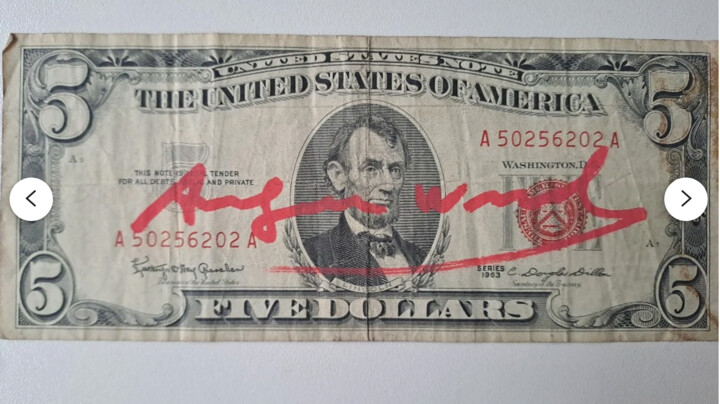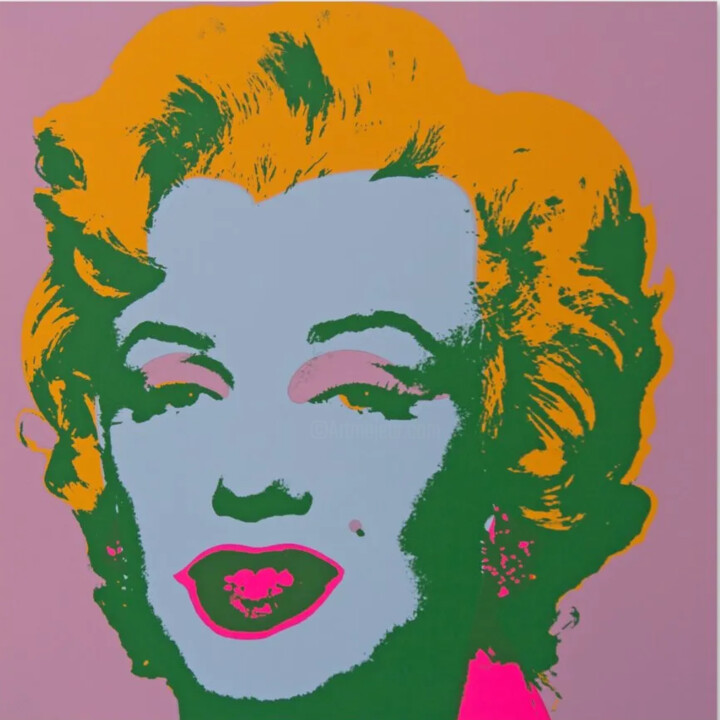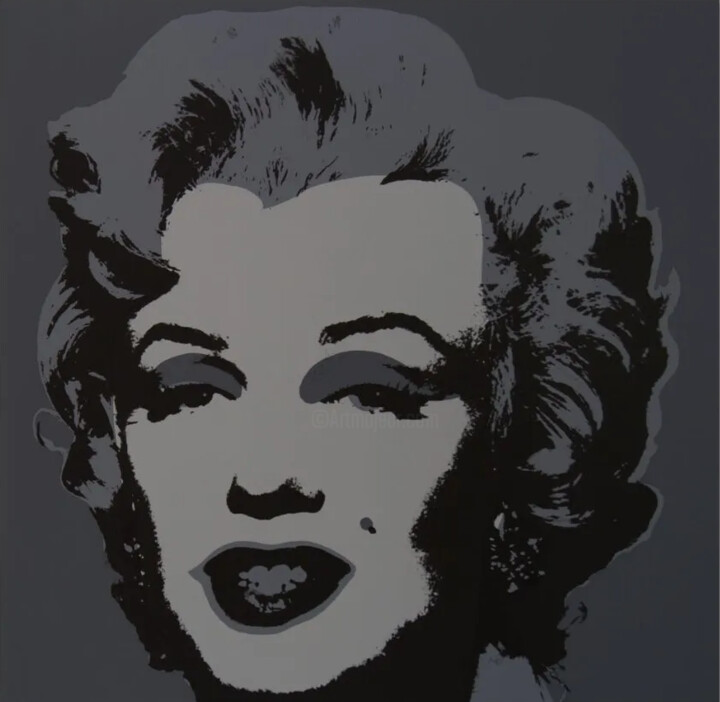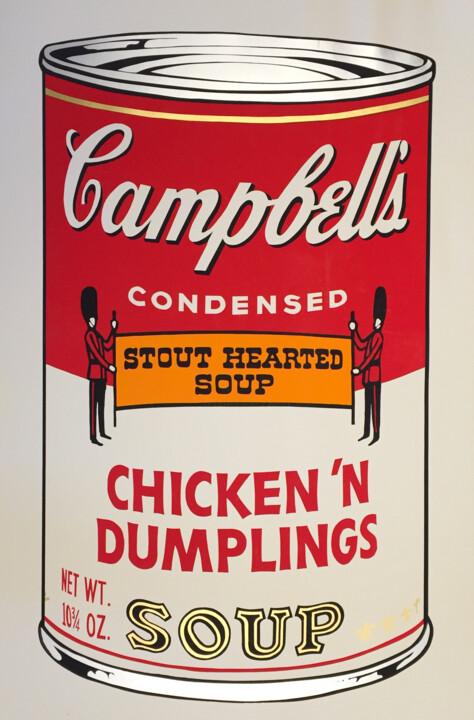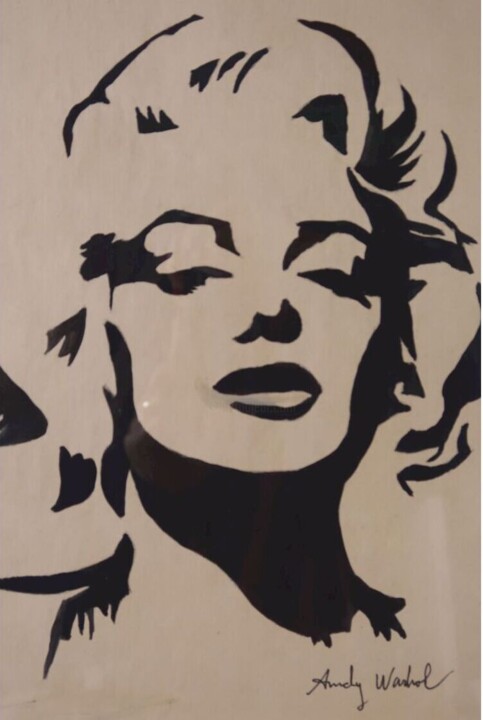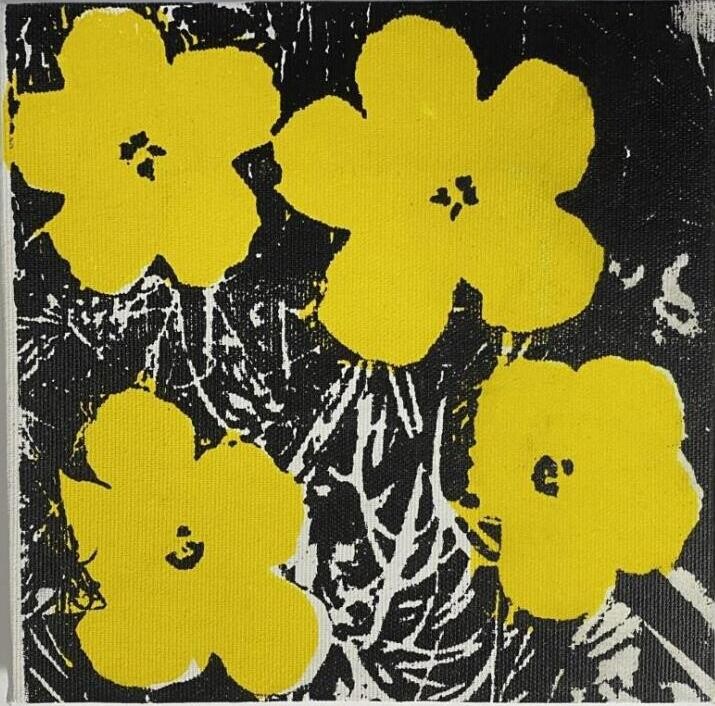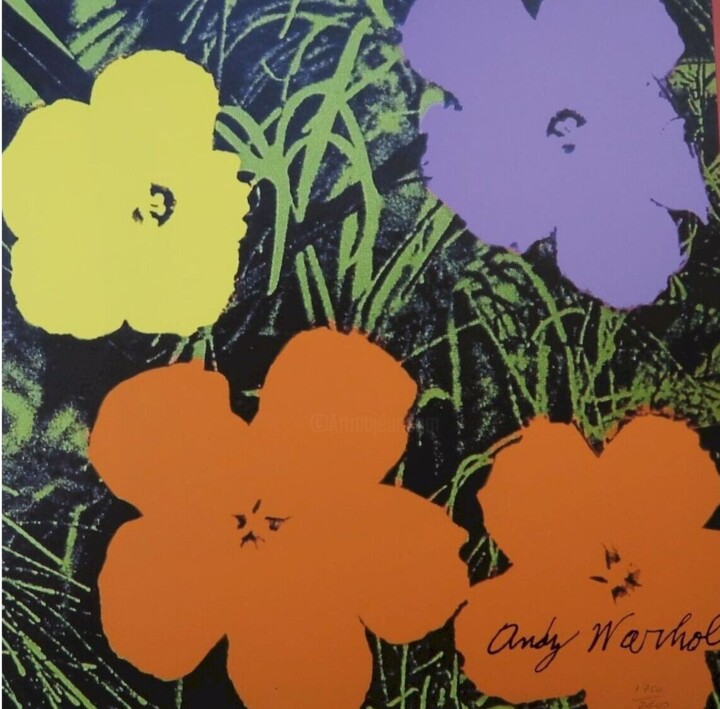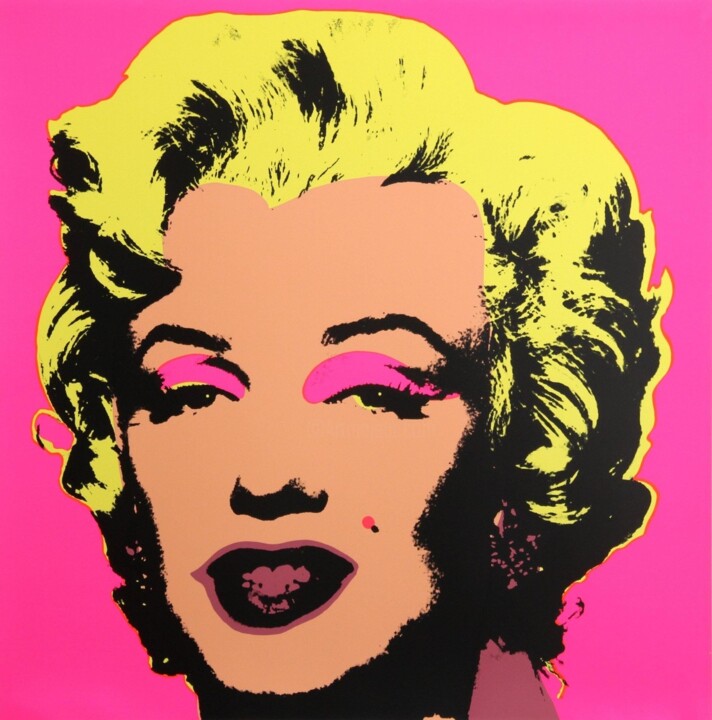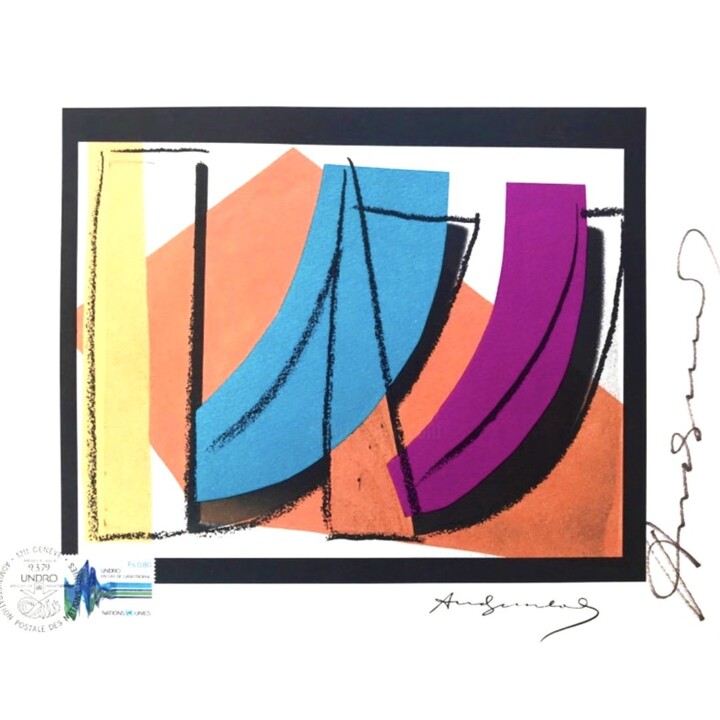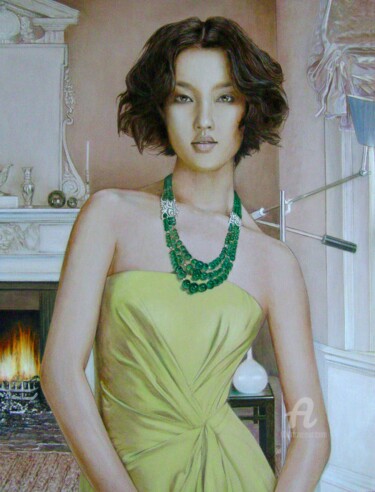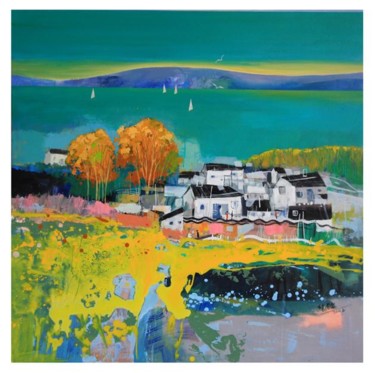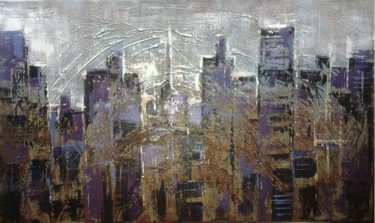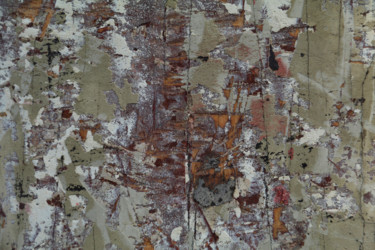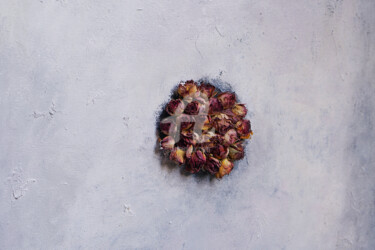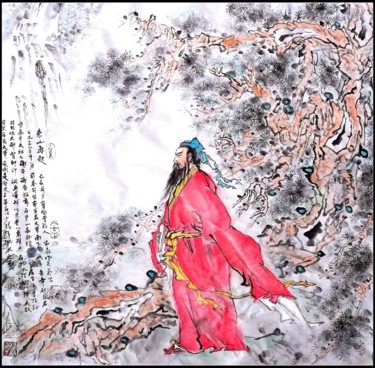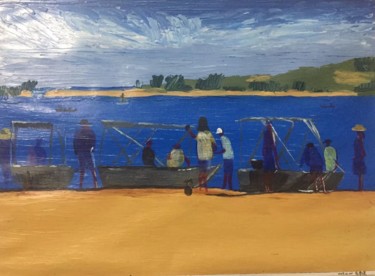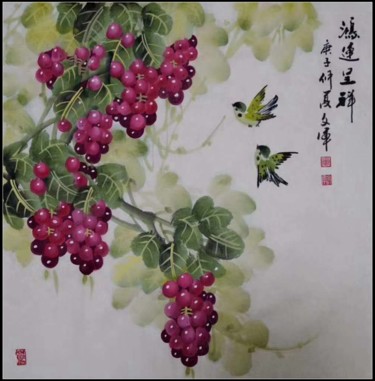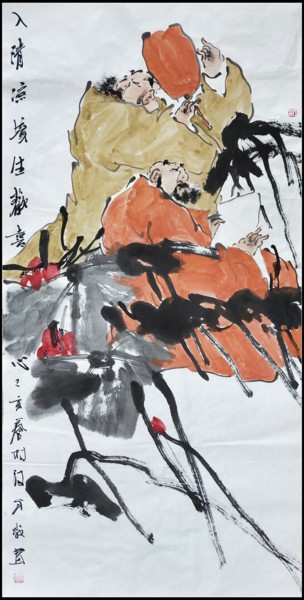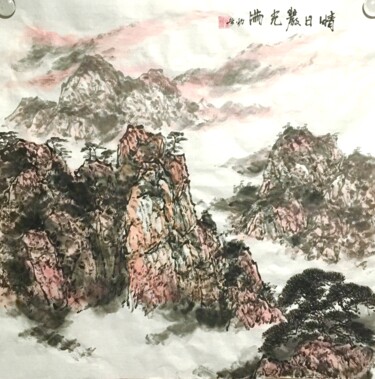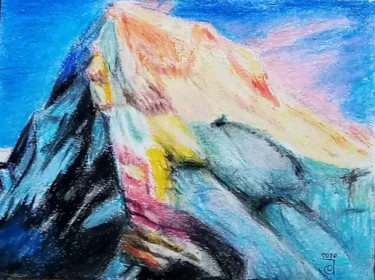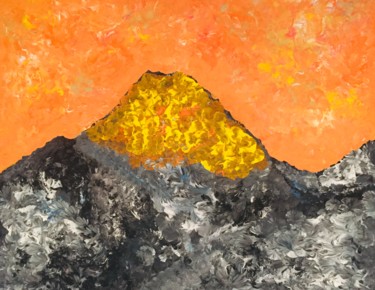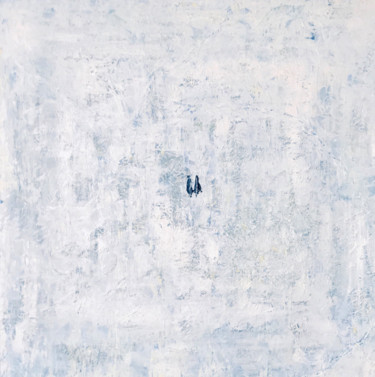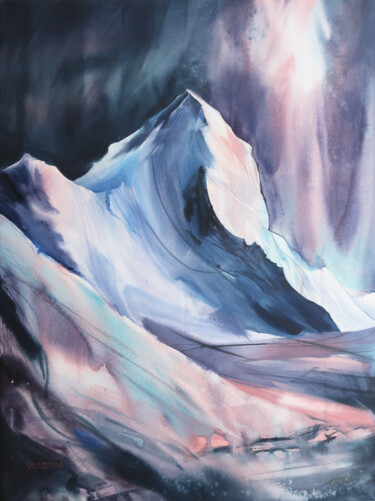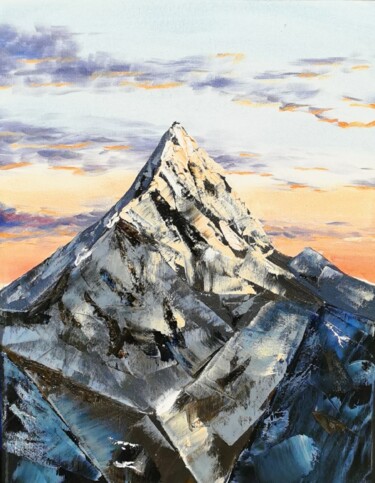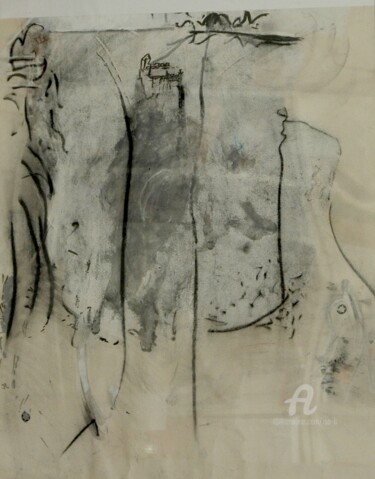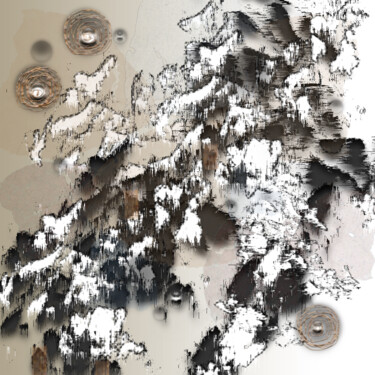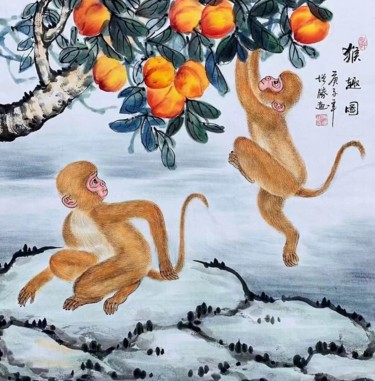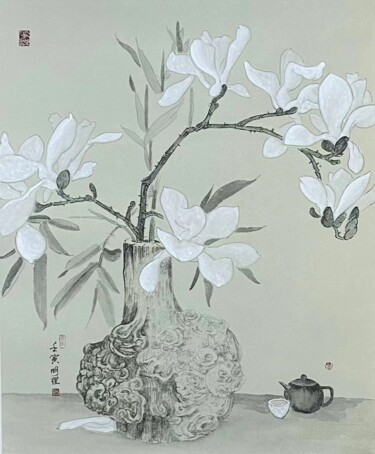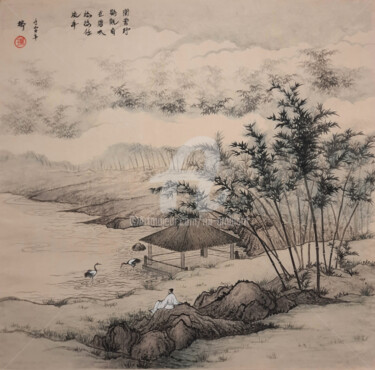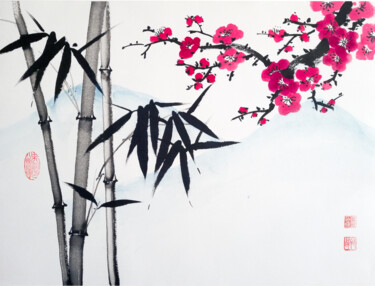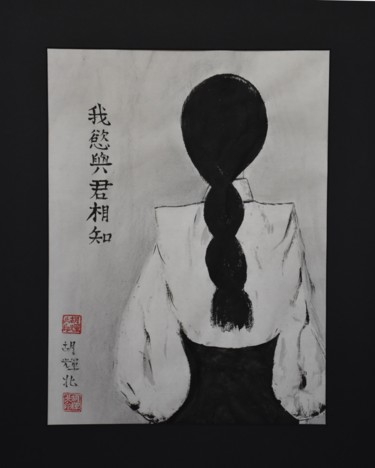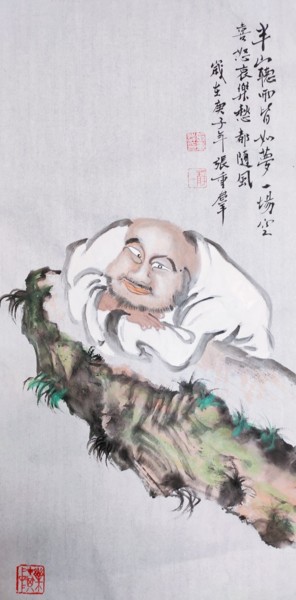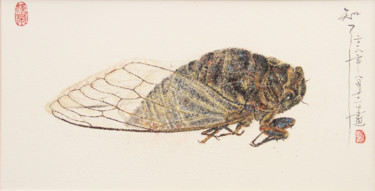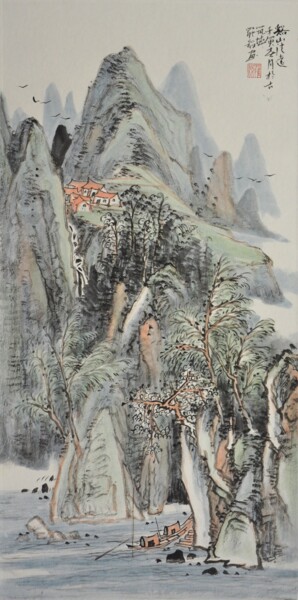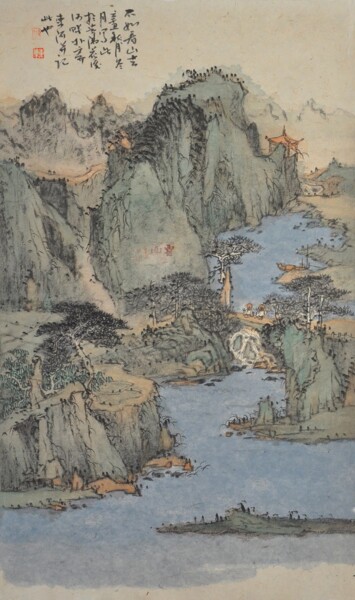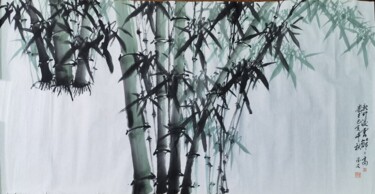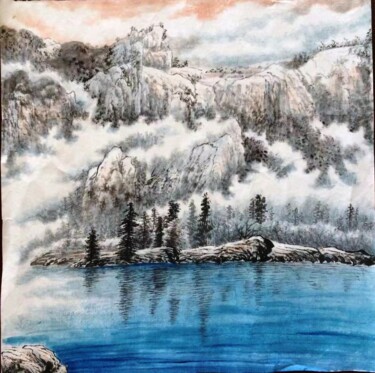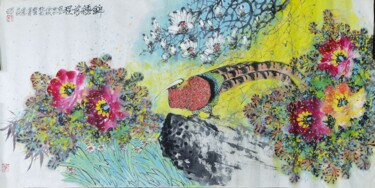Who is David Chau?
David Chau is renowned as one of the foremost art aficionados in Shanghai. His eclectic collection not only features pieces from emerging Chinese and international artists but also boasts a vast array of video art and early 20th-century Shanghai modernist paintings. Engaging with every facet of China's art scene, from funding art projects to facilitating art fairs and establishing foundations, Chau has made significant contributions. Notably, he has provided financial backing to galleries such as Leo Xu's and Simon Wang's Antenna Space and played a pivotal role in the founding of Art021, Shanghai's rapidly expanding art fair. In a conversation with Larry's List, Chau divulged the origins of his passion for collecting, the spirited camaraderie among Chinese collectors, and his insights into China's evolving role in the global art market.
David Chau has his own collection criteria
Since 2003, David Chau has been actively involved in contemporary art collection, establishing his own collection system and habits. His criteria for acquisitions are twofold: first, whether the artist fits into his collection system, and second, the potential development prospects of the artist in the future. Drawing from his study of art history, many of Chau's acquisitions are guided by the trajectory of art history. He evaluates whether the artist's work contributes to art history and whether they have the potential to shape its future.
Over the years, Chau's art collection has expanded to encompass 500 to 600 pieces, spanning a diverse range of subjects. While he initially collected stamps and works by Asian modernist masters like Wu Dayu, Wu Guanzhong, and Zao Wou-Ki, his collection evolved to include more avant-garde contemporary and video art. Despite this evolution, Chau emphasizes that his collecting trajectory remains consistent, with Chinese modernism remaining a significant focus.
"Wu Dayu is very important to me because I believe he was one of the founding figures of what is now the China Academy of Art, and his influence extends from Chinese modernism to contemporary art," Chau stated. He values the clear lineage of inheritance within Chinese art history. When considering the future market, Chau emphasizes the importance of the institutions supporting artists. He highlights the role of artist agencies and galleries in facilitating artists' long-term development.
Chau's commitment to supporting artists extends beyond commercial ventures. He allocates a significant portion of his art funds annually to support artists' projects, recognizing the societal progress that comes from supporting non-commercial works. Chau cites artists such as Yu Deyao, Qiao Zhibing, Liu Yiqian, Wang Wei, and his wife as pivotal figures in the development of Chinese contemporary art.
Unlike some collectors who opt to establish art museums, Chau focuses on building the ecology of the Chinese art market. He explains, "What I chose was to address the deficiencies within the system." Chau founded ART021 to fill the void left by the absence of art fairs in Shanghai, supporting local galleries like Antenna Space and Leo Xu Project.
Despite his commercial involvement, Chau maintains integrity and adherence to principles in his actions. He views his efforts as integral to promoting the development of contemporary art and making it accessible to the public. With ART021 becoming a benchmark for Shanghai's art fair scene, Chau's original intention was simply to cover operating costs and contribute to Shanghai's art ecology.
When considering potential losses, Chau acknowledges his role as a businessman but emphasizes strategic planning to ensure profitability. ART021 has consistently performed well, with meticulous attention to market trends and client needs. Chau remains focused on core objectives rather than external comparisons, prioritizing essential tasks to drive progress.
An interesting observation from Chau is the surprising success of smaller galleries at ART021. Contrary to assumptions that larger galleries perform better, Chau notes that sales are often stronger at the perimeter, attracting new collectors and expanding the art market's reach. He takes pride in the fair's role in nurturing new collectors and injecting vitality into the art market.
David Chau emphasizes the paramount importance of service in the realm of art. He views art as an ultimate luxury, necessitating an equally exceptional approach to provide consumers with the experience they deserve. For Chau, the most crucial aspect of art service lies in offering professional knowledge and simplifying complex concepts to aid potential buyers who may be interested in art but lack understanding. He believes in the power of professionalism to imbue buyers with a sense of value, making them willing to invest in art not just monetarily, but also intellectually.
In Chau's assessment, China boasts a sizable pool of collectors, but the market lacks careful cultivation. He observes that while many affluent individuals are eager to enter the art scene, some fall victim to deception, purchasing incorrect or counterfeit works. Furthermore, he notes the neglect of significant artists in art history, whose careers languish despite their historical importance. Chau advocates for the revival of such artists' careers, particularly during times of financial crisis.
Chau criticizes many art institutions for failing to provide essential content and services. He suggests various strategies for galleries to attract new collectors, recognizing that potential buyers may have varying levels of financial means and cultural interests. Importantly, he emphasizes the necessity of encouraging purchases as a means to foster genuine interest and engagement in art. Ultimately, Chau reiterates that the heart of the art market lies in its content, asserting that promoting elite culture with a joyful approach is key to success.
Crossing the River by Feeling the Collectors
During Shanghai Art Week in November 2023, David Chau unveiled an extensive array of artworks from his collection in the exhibition titled “Crossing the River by Feeling the Collectors.” The theme, inspired by the Chinese proverb “crossing the river by feeling the stones,” epitomized Chau’s approach to navigating the art world without set guidelines.
Curated by artist Xu Zhen, the ambitious exhibition made waves in the Chinese art scene and ignited significant buzz on social media. Featuring over 90 artists from 24 countries and regions, the show spanned all five floors of the commercial complex C-PARK Haisu, showcasing a diverse range of mediums, from painting to video. Chau expressed delight at the exhibition's success, noting the surprise of international dealers who attended the show and were impressed by the diversity and depth of the artworks. He remarked, “Westerners got a sense that China could also have such different types of collections.”
Visitors entering the exhibition were greeted by Los Angeles artist Lauren Halsey’s mirrored installation Briccs, setting the tone for an immersive experience. Throughout the space, artworks such as Lu Pingyuan’s “Story” series, featuring eerie depictions of ghosts and whimsical vignettes, captivated viewers.
The exhibition wasn’t confined to conceptual installations; it also included rare floral paintings by Wu Dayu, considered a pioneer of Chinese modern art. These paintings held sentimental value for Chau, being among his earliest acquisitions from his college days. Reflecting on his initial purchase, Chau recalled, “At that time, China didn’t have an art market like today, and this work probably cost a few thousand dollars.”
At the heart of the exhibition lay Chau’s own collection, housed by his nonprofit Cc Foundation, which comprises nearly 1,000 artworks from 250 artists. Spanning from the 1980s to the present day, the collection includes works by diverse artists such as Christina Quarles, Adrián Villar Rojas, Huma Bhabha, and Cao Fei.
Established in 2015, the foundation aims to broaden perspectives beyond the Euro-American-centric narrative, focusing primarily on emerging and mid-career artists, particularly those from the Pacific Rim and the Global South. Despite its international scope, the collection remains rooted in contemporary Chinese art. Chau explained, “From my point of view, it’s a very international collection where one can see the ‘collision’ with global art, but it’s still about promoting Chinese contemporary art.”
His collection is not just a display of artworks but a reflection of his personal tastes and interests. Among the plethora of pieces showcased in the exhibition, David Chau singled out "A 21st Century Portrait" (2006) by Douglas Gordon and Philippe Parreno as a favorite, prominently displayed on the basement level. As an avid soccer enthusiast and owner of a professional soccer team in China, Chau holds a special fondness for the soccer legend Zinédine Zidane, who features prominently in the artwork. “It’s a piece that aligns perfectly with my personal identity,” remarked Chau.
Chau's encounter with the video work was at a film festival in 2006, where he was captivated enough to acquire it for $2 million, setting a record for video art at the time. Describing the acquisition as driven by passion rather than investment, Chau saw it as an opportunity to own a piece of art he had admired for years, one with significant art historical value.
In parallel with the rise of art fairs spearheaded by Chau, China has witnessed a surge in private art museums, prompting discussions about the future of private art collections like his. While he hasn’t disclosed plans to establish a museum, he emphasized that his collection has always adhered to the standards of international art museums or foundations. His aim extends beyond the immediate, aspiring to set standards for China’s art market. “Compared to the West, China’s art market is relatively young, only 20 years old, and is still establishing its own norms and value system,” Chau explained. Currently, the auction market dominates, but Chau believes in the necessity of diversifying and strengthening the art ecosystem.
Reflecting on the exhibition’s impact, Chau expressed satisfaction, noting its success in attracting numerous visitors, including international dealers from the fairs. “Westerners gained insight into the diversity and depth of collections in China,” he remarked.
Chau acknowledged the market's influence on collectors and emphasized the importance of establishing unique standards for China's art market. He envisions a future where these standards, encompassing art museums and biennials, foster the development of contemporary art. Chau observed a shift in the collecting landscape, with a new wave of collectors prioritizing personal preferences and rigorous research over pursuing fame. This generation demands authenticity and transparency, which requires Western galleries catering to the Chinese market to adapt strategically.
Interview with David Chau
What inspired you to embark on your journey of art collecting? What drives your passion for collecting?
From a young age, I've been a fervent collector of various items, including stamps, coins, comic books, and sports cards. I've always viewed collecting as an incurable "fatal disease." Moreover, my fascination with the business aspect of collecting led me to open my first eBay store at just 14 years old, selling sports cards. When I stumbled upon the story of Andy Warhol and his art fetching record prices, I was captivated. This led me to pursue art history at university, where I discovered that art could be collected much like stamps and coins.
Initially, you amassed hundreds of works by early 20th-century Shanghai modernist painters. What drew you to this particular era and group of artists?
My professor at the University of British Columbia had graduated from the China Academy of Art in Hangzhou, where many of the early pioneers of 20th-century modernist painting resided or taught. This connection fueled my interest in the field. Additionally, my collector's instinct told me that these pioneers' works were undervalued. Contrary to popular belief, China did indeed experience a modernist movement, coinciding with global trends as many Shanghai and Hangzhou artists studied in Paris and Tokyo. I wanted to preserve and promote this important aspect of Chinese art history.
Later, you shifted your focus solely to contemporary art. What prompted this change?
While many assume I exclusively collect contemporary art, I actually have diverse interests. However, in the mid-2000s, there was virtually no Chinese contemporary art market. Works and artists were relatively inexpensive, and few Western collectors paid attention to them. Engaging with the art world and collecting, I encountered contemporary artists struggling for recognition and livelihoods. Building friendships with them spurred my interest in collecting their works.
Why did you opt to concentrate your collection on Chinese artists like Liu Wei, Xu Zhen, and Yang Fudong? Is there a common thread among their works in your collection?
Simply put, they represent the pinnacle of talent in my generation. These artists not only gained acclaim in China but also garnered international recognition. My aim is to collect the finest artists of my generation comprehensively, spanning their entire bodies of work. In doing so, I'm contributing to a small slice of art history. Additionally, many of these artists are dear friends of mine.
What attracts you to video art specifically?
I'm less concerned with the medium than with the artist's message. Whether it's conveyed through painting, video, photography, or installation, I'm interested in works that effectively communicate the artist's vision.
Can you recall the first and most recent artworks you purchased, as well as the last piece you sold?
One of my earliest acquisitions in 2003 was a work on paper by the esteemed Wu Dayu, considered the father of modernism theory in China and the founder of the China Academy of Art. My most recent purchase was a piece by Allora and Calzadilla acquired at Art021. As for sales, I recently parted with one of artist Chen Yifei's finest works, "Warm Spring in the Jade Pavilion," which set a record as the most expensive oil painting sold in China at 149.5 million RMB in the last Guardian Auction.
How did you determine where to invest within the art world?
My approach was to eschew trends and instead cultivate relationships within the industry. Thorough research into artists, their works, and their significance within art history informed my decisions. I also respected the ecosystem of the art world, primarily sourcing acquisitions from auctions or the secondary market rather than galleries.
What motivated the establishment of Art021, and what goals do you aspire to achieve through it?
The investment phase of my art endeavors has concluded, with my primary focus now on the non-profit foundation. My aim is to curate one of the most outstanding collections of artists from my generation and to support and promote these talents globally. The inception of the art fair, however, stemmed from a different rationale. Recognizing the absence of high-quality art fairs showcasing the best global art in China, my partners and I felt compelled to fill this gap. We believed it was imperative for Chinese contemporary art and collectors to elevate their presence internationally. Our simple desire was to introduce the finest art from around the world to China, facilitating exposure for collectors. The rapid success of Art021 surpassed our initial expectations.
If you could choose any individual in the world as a dinner guest, who would it be and why?
Outside of the art world, I would invite Warren Buffett, whom I regard as the preeminent investor of our era. His wit and intelligence make for intriguing conversation. However, I'm not inclined to pay the exorbitant auction price for lunch with him. In the realm of art, my choices would be Joseph Duveen and François Pinault— the former hailed as the greatest art businessman in history, and the latter, a collector whom I deeply admire and respect.
Looking ahead, what role do you foresee China playing in the art market over the next three years?
I anticipate that more Chinese artists will gain international recognition and secure opportunities for museum exhibitions worldwide. Additionally, more Chinese collectors will garner attention on the global stage.

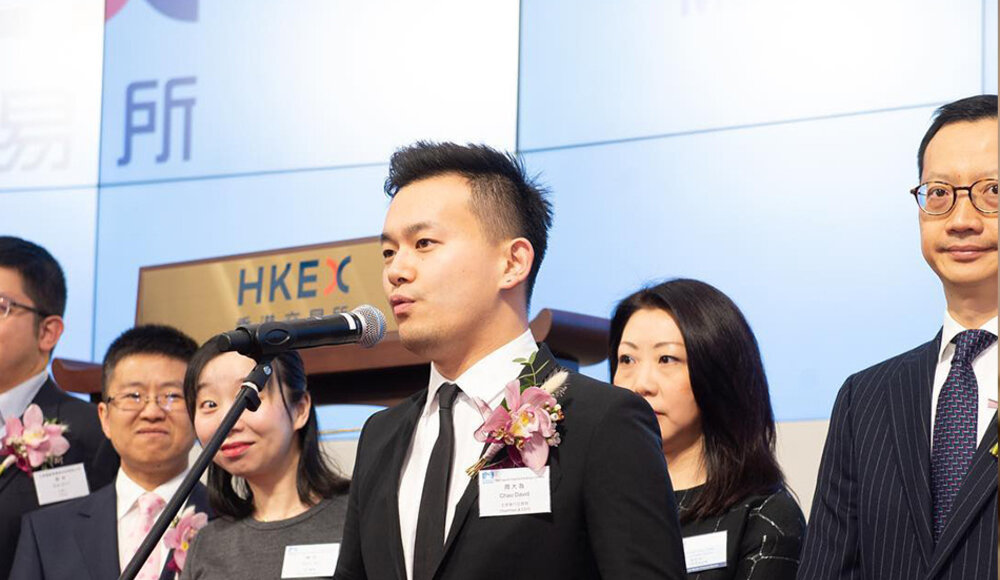
 Selena Mattei
Selena Mattei

